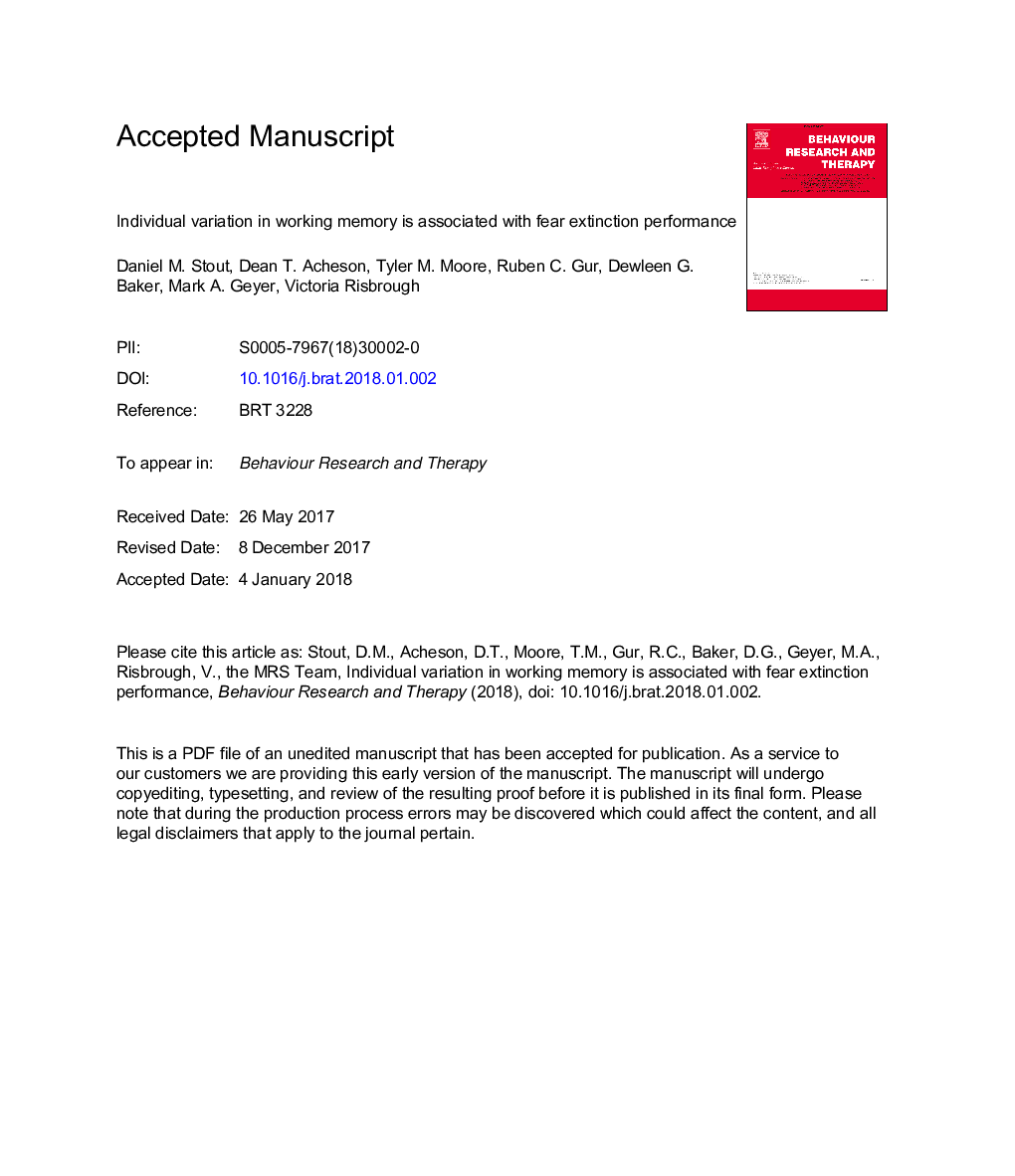| Article ID | Journal | Published Year | Pages | File Type |
|---|---|---|---|---|
| 7261879 | Behaviour Research and Therapy | 2018 | 41 Pages |
Abstract
PTSD has been associated consistently with abnormalities in fear acquisition and extinction learning and retention. Fear acquisition refers to learning to discriminate between threat and safety cues. Extinction learning reflects the formation of a new inhibitory-memory that competes with a previously learned threat-related memory. Adjudicating the competition between threat memory and the new inhibitory memory during extinction may rely, in part, on cognitive processes such as working memory (WM). Despite significant shared neural circuits and signaling pathways the relationship between WM, fear acquisition, and extinction is poorly understood. Here, we analyzed data from a large sample of healthy Marines who underwent an assessment battery including tests of fear acquisition, extinction learning, and WM (N-back). Fear potentiated startle (FPS), fear expectancy ratings, and self-reported anxiety served as the primary dependent variables. High WM ability (NÂ =Â 192) was associated with greater CSÂ +Â fear inhibition during the late block of extinction and greater US expectancy change during extinction learning compared to individuals with low WM ability (NÂ =Â 204). WM ability was not associated with magnitude of fear conditioning/expression. Attention ability was unrelated to fear acquisition or extinction supporting specificity of WM associations with extinction. These results support the conclusion that individual differences in WM may contribute to regulating fear responses.
Related Topics
Health Sciences
Medicine and Dentistry
Psychiatry and Mental Health
Authors
Daniel M. Stout, Dean T. Acheson, Tyler M. Moore, Ruben C. Gur, Dewleen G. Baker, Mark A. Geyer, Victoria B. Risbrough, the MRS Team the MRS Team,
